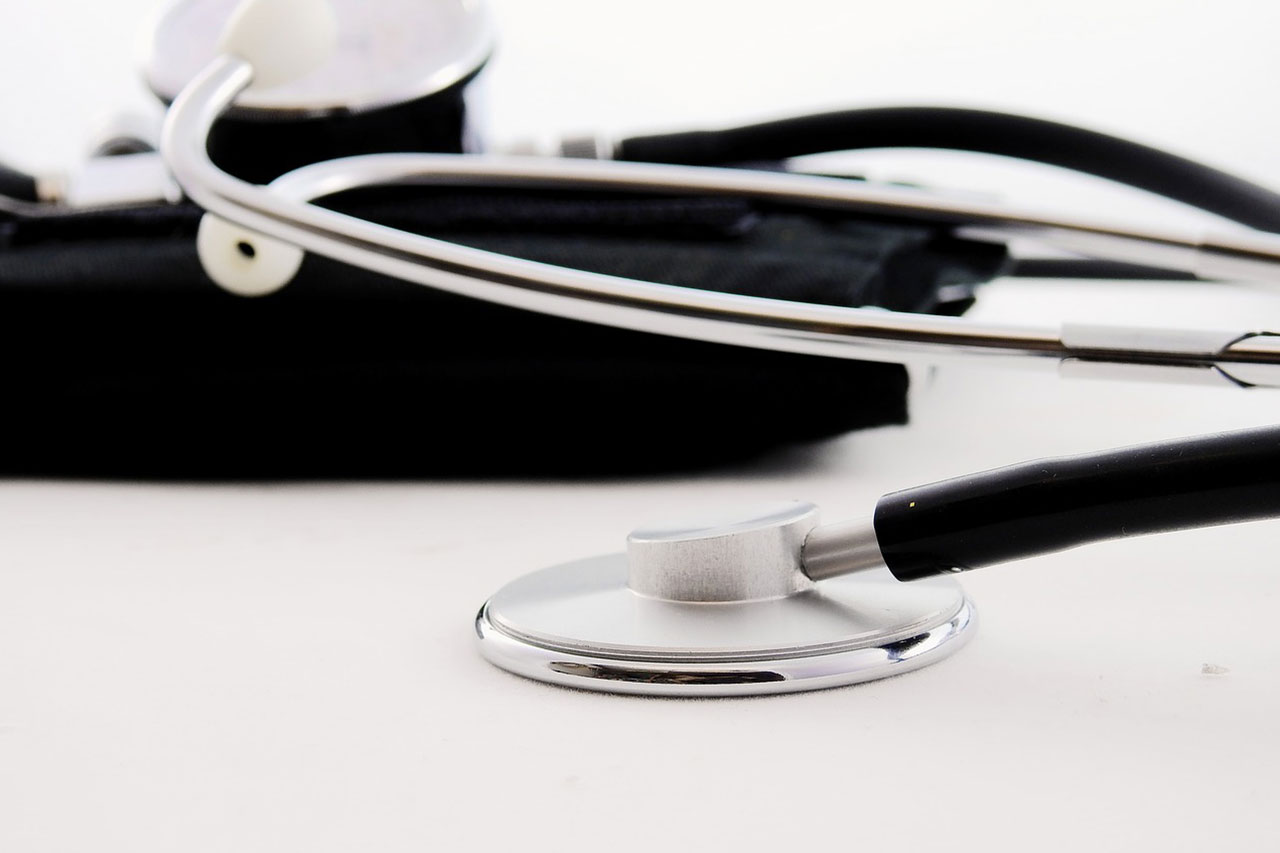The stethoscope is an instrument used for auscultation, or listening to sounds produced by the body. It is used primarily to listen to the lungs, heart, and intestinal tract. It is also used to listen to blood flow in peripheral vessels and the heart sounds of developing fetuses in pregnant women.
Purpose
A stethoscope is used to detect and study heart, lung, stomach, and other sounds in adult humans, human fetuses, and animals. Using a stethoscope, the listener can hear normal and abnormal respiratory, cardiac, pleural, arterial, venous, uterine, fetal and intestinal sounds.
Demographics
All health care providers and students learn to use a stethoscope.
Description
Stethoscopes vary in their design and material. Most are made of Y-shaped rubber tubing. This shape allows sounds to enter the device at one end, travel up the tubes and through to the ear pieces. Many stethoscopes have a two-sided sound-detecting device or head that listeners can reverse, depending on whether they need to hear high or low frequencies. Some newer models have only one pressure-sensitive head. The various types of instruments include: binaural stethoscopes, designed for use with both ears; single stethoscopes, designed for use with one ear; differential stethoscopes, which allow listeners to compare sounds at two different body sites; and electronic stethoscopes, which electronically amplify tones. Some stethoscopes are designed specifically for hearing sounds in the esophagus or fetal heartbeats.
Diagnosis/Preparation
Training
Stethoscope users must learn to assess what they hear. When listening to the heart, one must listen to the left side of the chest, where the heart is located. Specifically, the heart lies between the fourth and sixth ribs, almost directly below the breast. The stethoscope must be moved around. A health care provider should listen for different sounds coming from different locations. The bell (one side of the head) of the instrument is generally used for listening to low-pitched sounds. The diaphragm (the other side of the head) of the instrument is used to listen to different areas of the heart. The sounds from each area will be different. “Lub-dub” is the sound produced by the normal heart as it beats. Every time this sound is detected, it means that the heart is contracting once. The noises are created when the heart valves click to close. When one hears “lub,” the atrioventricular valves are closing. The “dub” sound is produced by the pulmonic and aortic valves. Other heart sounds, such as a quiet “whoosh,” are produced by “murmurs.” These sounds are produced when there are irregularities in the path of blood flow through the heart. The sounds reflect turbulence in normal blood flow. If a valve remains closed rather than opening completely, turbulence is created and a murmur is produced. Murmurs are not uncommon; many people have them and are unaffected. They are frequently too faint to be heard and remain undetected.
The lungs and airways require different listening skills from those used to detect heart sounds. The stethoscope must be placed over the chest, and the person being examined must breathe in and out deeply and slowly. Using the bell, the listener should note different sounds in various areas of the chest. Then, the diaphragm should be used in the same way. There will be no wheezes or crackles in normal lung sounds.
Crackles or wheezes are abnormal lung sounds. When the lung rubs against the chest wall, it creates friction and a rubbing sound. When there is fluid in the lungs, crackles are heard. A high-pitched whistling sound called a wheeze is often heard when the airways are constricted.
When the stethoscope is placed over the upper left portion of the abdomen, gurgling sounds produced by the stomach and small intestines can usually be heard just below the ribs. The large intestines in the lower part of the abdomen can also be heard. The noises they make are called borborygmi and are entirely normal. Borborygmi are produced by the movement of food, gas or fecal material.
Maintenance
Stethoscopes should be cleaned after each use in order to avoid the spread of infection. This precaution is especially important when they are placed directly onto bare skin.
Culled from Encyclopedia of Surgery
